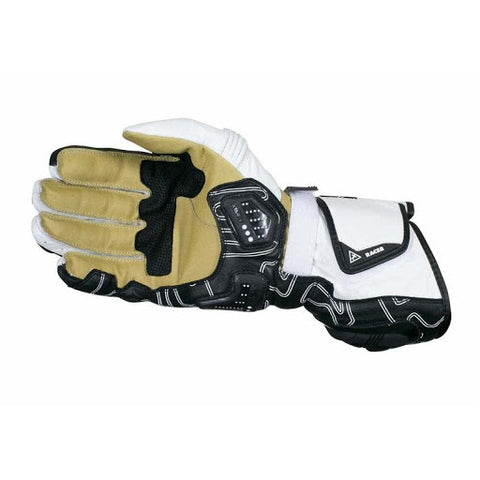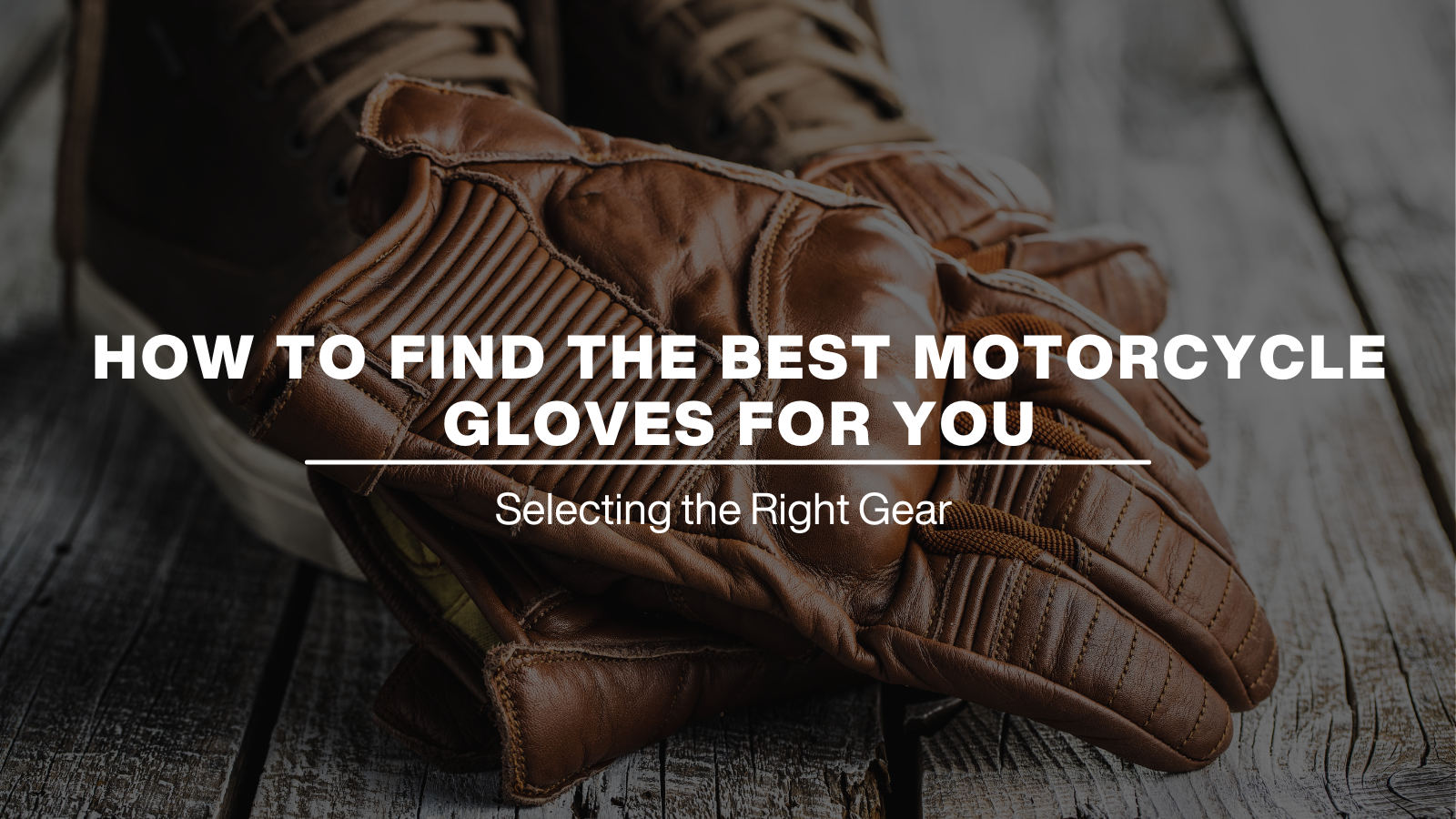by Gabe Ets-Hokin
Hands are unbelievably complex and fragile bits of machinery; they contain 26% of your body's bones and are held together by dozens of ligaments and muscles. Since most motorcyclists we've met work with their hands, we're stumped as to how casually many of us take hand protection. Even simple crashes can result in the skin being flayed from your hand (at least one of our team members has learned this the hard way and now makes gloves a primary piece of motorcycle gear).
But I get it: there are so many gloves to choose from! I know what I like in a motorcycle glove, but that doesn't mean I know what you like.
Retailer Revzilla.com has over 1000 different gloves, ranging in price from $12 to over $400, and Amazon offers well over 2,000 matches for “motorcycle gloves.” Where do you even start?
As with so many other things, gloves are a trade-off of many factors and features. You can have ultimate protection...but that won't be a very comfortable glove. Or you can have ultimate comfort...but it won't be a very protective glove.
What do the glove designers themselves think about when they're developing their products?
Well, I called up a few of them, and I was surprised to find some common threads regardless of who I was speaking to.
Here's what I gleaned...
Gloves Improve the Riding Experience
“How your hands touch the bars affect the riding experience,” says Helmut Kluckner, Helimot Leathers co-founder. He started the company with his wife, Linda, and they've been making exquisitely crafted leather racing suits for many years.
Helmut's experience with racers—many of them professionals—informed his designs of Helimot's line of made-in-USA racing and touring gloves. Gloves are “a link from the human to the bike” to Helmut, and he believes in having padding on the palm to “reduce the amount of vibration that goes to the body.”
Balance Between Comfort and Safety
DeerSports, by Lee Parks designs are a favorite of the 500-mile-a-day touring set.
This is so obvious, yet so hard to do well. That's obvious to Lee Parks.
The octopus-like Parks has his tentacles not just in glove manufacturing, he's also the founder of Total Control Training, which trains riders for state-sponsored training programs in California and Pennsylvania, a best-selling author of motorcycle-technique books, and probably six other things I haven't even heard of yet. I met him over 20 years ago, when he was selling his DeerSport gloves at a motorcycle show.
Parks' gloves are as ubiquitous among long-distance riders as the omnipresent black Aerostich Roadcrafter riding suit. That's because the deer and elk hides he uses can get wet over and over without hardening, cracking or rotting and are tougher and more flexible than cowhide—which means the gloves can be thinner, lighter and still be remarkably durable.
Parks maintains that his gloves, even without the 21st-Century features of high end roadracing gloves like carbon fiber knuckle guards, Aramid & Nomex panels and multiple straps and adjusters, provide “significant protection without restricting movement.”
And that's important. “You can put on a Robocop glove, but you can crash because you can't move your fingers,” says Parks, and that's a statement I can attest to after trying to wear a stiff pair of high-end roadrace gloves on the racetrack and my fingers kept slipping off the brake lever. Annoying on the freeway; scary at 100 mph.

These $279 Racer High Racer gloves offer a sticky patch of Pittards leather on the palm to help get a grip on things when you need to, but a Knox slider when you’re sliding on the pavement and don’t want to grip.
On the other hand, you can go too far with the comfort thing. “I see guys wearing all kinds of expensive gear--helmet, jacket--but with work or gardening gloves,” says Lee Block of Racer Gloves USA. Lee's been importing the Austrian company's designs for many years, and I've always liked his products.
For the protective features they offer, they're the most comfortable and affordable brand I've found. “Gloves seem to be a secondary thought for non sport riders and younger riders,” says Block, but it doesn't make sense to him to wear less protective gloves for different styles of riding. “Pavement's going to hurt no matter how fast you're going or what you're doing.”
Fit and Quality Trump Features
If the gloves you're considering don't look like they'd survive a direct hit from a low-grade nuclear weapon, don't worry—all three of the guys I spoke to agreed that the quality of materials, construction and fit are more important.
Both Parks and Kluckner worry more about seam failure than armor, and Lee even eschews high-strength Kevlar or Aramid thread because it can slice through leather and cause seam failure in a crash. They've also seen enough overseas-manufactured gloves fail to keep paying higher costs to have their gloves made in the United States so they can keep an eye on the quality.
“Even a minimal glove made of a nice deerskin in the USA, just a work glove, can be better than a higher-end glove from overseas,” Kluckner told me. Parks has only worked with his factory in Oregon since the 1990s and Block's Racer gloves are nicely tailored and can fit a wider range of hands than most company's products.
They also agree you should buy the best-fitting gloves you can find. It's tough to buy gloves on the Internet, so the best option is to go to a good motorcycle shop with knowledgeable staff and try on a few pairs. Don't assume that because you're a medium in one brand you'll be a medium in all of them; make sure you follow the sizing recommendations on the manufacturer's website.
Also consider after-sales support, says Parks. Those $400 roadrace gloves have so many seams and parts that a local leather-repair shop can't fix them, and since even some high-end brands use dozens of contractors all over the world to make the gloves, there's nowhere to send the to fix, even if you're willing to spend $120 on postage.

Riders love Helimot’s padded palm and soft deerskin. Reflective patches on the fingers are a nice touch.
It's hard to get gloves custom made for your exact size, but Parks says he'll customize his DeerSports or SuMo gloves to account for those of us with off-sized fingers, thumbs and palms.
The More You Ride, The More You Appreciate Good Gloves
“Riders start out with minimal protection,” Kluckner has found. “But after they crash, or hear about someone they know crashing, they become more judgmental.”
A rider who hasn't done 500-mile days or slid on their palms on hot asphalt might look at the features and benefits of a $200-pair of gloves and say, “why do I need that?” Block has an answer: “Why do you wear any safety gear?"
When the worst happens, be prepared.
So how do these companies stay afloat when the market is flooded with low-cost competition? Simple: gloves wear out, and for their discerning customers, there's no other option. “When you find a brand that fits, you're hooked,” Block tells me. And looking in my own bin of gloves, filled with gloves from just a few companies, I have to agree.
Sounds a lot like the motorcycle earplugs business, in fact--and we know our customers are just as loyal because they’ve found the right balance of comfort and protection reducing wind noise with hearing protection.





Share:
LOOKING BACK: 8 BEST VIRTUAL LIVE MUSIC OF THE PANDEMIC ERA
Getting On Track: 5 Ways To Go Fast